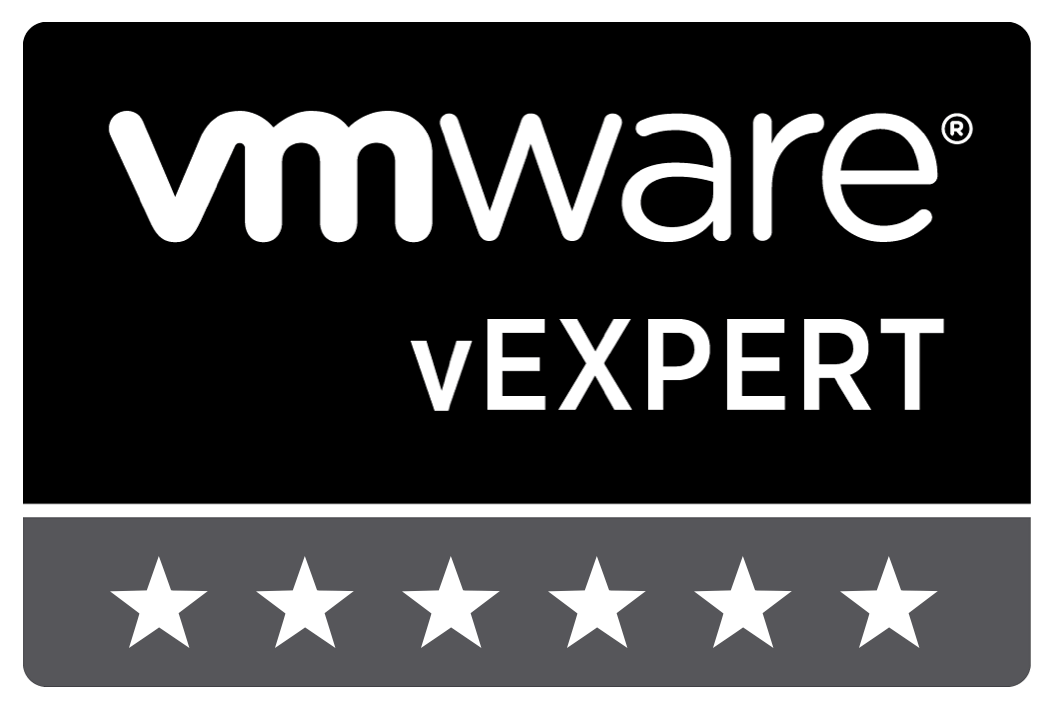VVOLs in SANsymphony-V10 PSP4 [or VVOLs on a notebook]
![VVOLs in SANsymphony-V10 PSP4 [or VVOLs on a notebook]](https://vnote42.net/wp-content/uploads/2016/01/datacore.jpg)
With SANsymphony-V10 PSP4 DataCore introduced VMware VVOL support. In this post I write about the installation and administration of this feature. This is also a very nice way to take a running VVOL implementation on a notebook with you.
An additional component in this setup is the DataCore VASA (vSphere Aware Storage API) provider for VMware vSphere. This is a critical component for VVOLs because you need it to perform essential tasks like powering on a VM or create/delete snapshots. This is because the VASA provider enables a bi-directional communication between vSphere and a storage device. When VASA provider is offline some tasks are not available any more. But running VMs will continue to run! To ensure high availability of VASA provider, DataCore implemented the option to install VASA provider in a active/standby-setup which works quite fine. More details you can find below.
To get this configuration to work, you have to do the following:
Download
- Download at least DataCore SANsymphony-V10 PSP4.
- VASA provider is included as a separate setup-file: DataCore.Vasa.Provider.Installer.msi
Prepare your environment for VASA provider
- VASA cannot be installed on a DataCore Server.
- VASA needs a SQL Server to run. At least SQL Server 2008 R2. I tested using Express version. SQL Server that hosts vCenter DB is an good option. In a setup using active/standby provider, do not install SQL Server (Express) directly on a machine that has VASA provider installed. Otherwise both provider stops working when this machine is lost.
- Use mixed-mode authentication during setup.
- In production-environment, always install VASA in active/standby setup!
- VASA needs at least .NET 4.5.1 installed.
- VASA needs at least Windows Server 2008 SP1.
- vCenter needs access to VASA – check Firewall.
- Provider port (default 8443) is entered during setup.
- VASA needs FQDN resolution.
- Create a user for vCenter access. Administrator role is necessary .
Install VASA
- Smart Deployment Wizard can be used to check requirements
- To install VASA, use Application and Server Tools
- Server setup
- Wizard checks requirements on server
- SQL setup
- Use sa or other sysadmin SQL user for setup
- Setup creates an new SQL user defined in wizard
- vCenter
- Enter vCenter user in administration-role
- Select SANsymphony-V user
- DataCore gets automatically registered in vCenter Storage Providers
- vCenter –> Manage tab –> Storage Providers
- Status should be online
- Server Group should be Active
- If not – “no storage system” – , check name resolution of VASA-server to DataCore server.
Install second VASA
- Smart Deployment Wizard can be used to check requirements
- To install VASA, use Application and Server Tools –> Install an additional VASA Storage Provider
- SQL database of already installed provider will be used
- Therefore availability of VASA provider database is critical! Providers itself should be stateless.
- In high-availability installation, second provider shows as standby
Create Diskpool(s) in DataCore
- Diskpool cannot be already used for Virtual Disks.
- Naming conventions
- String “VVOL” must be in name.
- For single disks, no space is allowed.
- For mirrored disks, a space is a must.
- More details see here.
- DataCore creates automatically a Protocol Endpoint (PE). This endpoint is displayed under Virtual Disks. For every Diskpool, named for VVOL, a PE will be created.
Create datastore in vSphere WebClient
- Type is VVOL.
- Your DataCore storage containers respectively disk pools should be listed. If not, check state of Storage Provider in Web Client.
- Select hosts for access.
- Capacity of Diskpool is displayed after creation.
Create a new VM Storage Policy
- Dataservice: DataCore.SANsymphony
- Rules currently available
- Storage Profiles
- Corresponds to DataCore Storage profiles
- Performance Class (Archive, Low, Normal, High, Critical)
- Replication Priority (Low, Regular High, Critical)
- Mirror Recovery Priority (Low, Regular, High, Critical)
- Write Aware Auto-tiering (Yes, No)
- Disk Type
- Single, Mirrored, or Dual
- Deduplication
- Yes/no
- Requires a deduplication pool created in SANsymphony-V that is configured as the storage container pool
- Auto-Tiering
- Yes/no
- Storage Profiles
- Just select option in policy you have available in DataCore environment.
Create VM
- Choose your created DataCore Policy
- In SANsymphony-V an entry under Virtual Disk will be created for:
- config-files
- each vmdk
- swap-file. Disk for Swap file exists just during runtime of VM.
Administration
- When creating a snapshot, DataCore does the snapshot. Management of snapshots is like VMware snapshots using WebClient.
- Because VVOLs are not served to hosts like Virtual Disks there are no front-end paths displays. Just mirror paths are shown.
- After creating new PEs in DataCore it can be faster to manually resync with VASA Provider in Web Client in Storage Providers than waiting for automatic rescan.
- Sometimes it is useful to restart VASA service to trigger a resync.
- Changing Storage Profile settings policy triggers the following:
- VVOLs in DataCore gets these settings applied.
- A VM will not be migrated to another PE that has a suitable Storage Policy applied.
- To move a VM from eg. HDDs to SSD you need to migrate it using vMotion. I did not find a way to do so by just assigning another policy.
- The migration takes account of existing snapshots. So VVOLs and there snapshots stays at the PE they belonged to, just the current state is migrated.
Troubleshooting
- At hosts
esxcli storage vvol vasaprovider listesxcli storage vvol protocolendpoint list- No folder in VMFS until VM is running –> no vmware.log
- at DC server
- Use DcsTraceConsole.msc to analyse logs
VVOL on the notebook
To run VVOLs on a notebook you need:
- A hypervisor like VMware Workstation
- Windows vCenter VM, installed software
- vCenter 6.0
- SANsymphony-V10 PSP4
- ESXi 6.0 VM(s)
- Windows VM for VASA provider
- Optional: a second Windows VM for VASA provider
- At least 16 GB of memory



Have you ever needed to move the current SQL database to a new server? I installed my production vasa with a local SQL 2014 server. Now after reading your blog, I would like to move the database to a new server and re point my active vasa to it. Then setup my standby vasa to the same remote sql.
Hi!
This is a good question! I did not test this scenario nor I did find anything at DataCore manuals about it. I asked the DataCore support. The answer I get was that they will think about it and do testing. Then I will get the information how it should work. I will post the information as soon as I get it.
Regards
Wolfgang